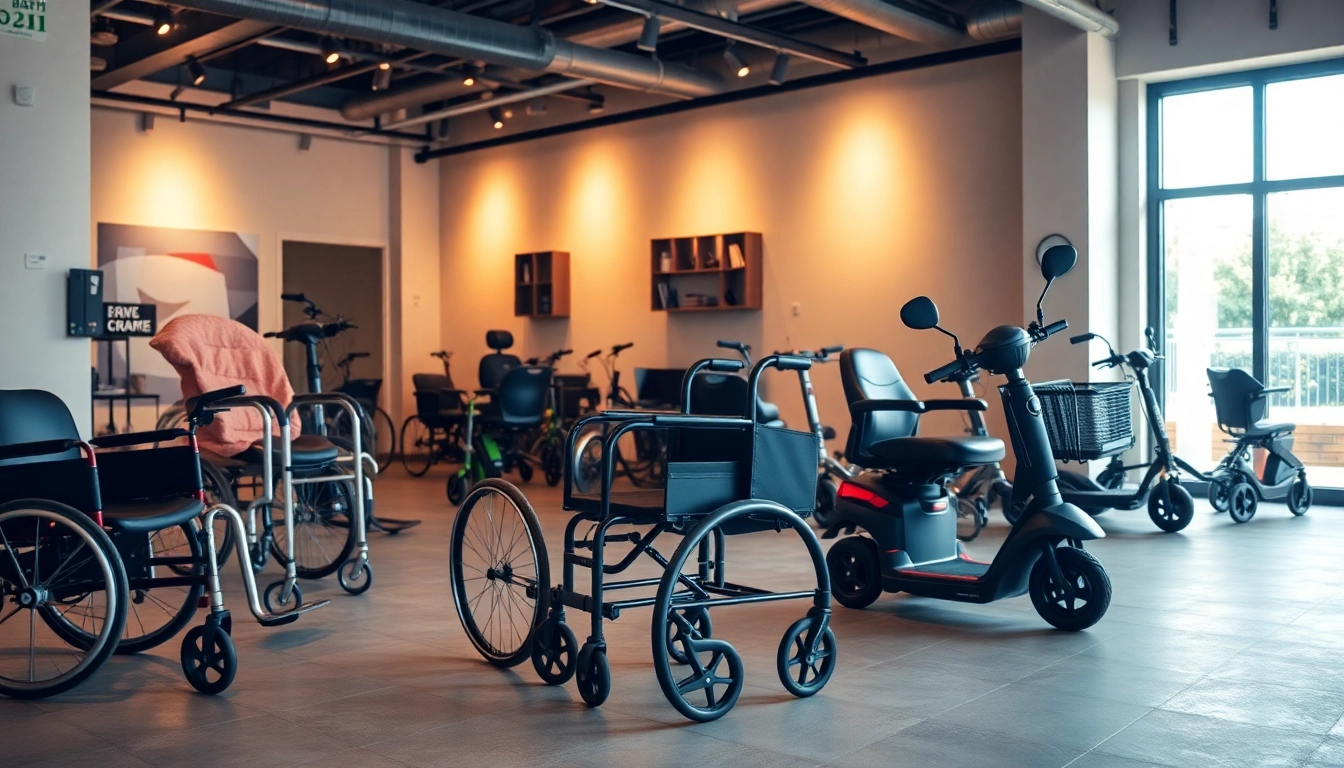Mobility equipment plays a crucial role in enhancing the quality of life for individuals with mobility challenges. As the population ages and more individuals face physical limitations, the demand for effective mobility aids has surged. The right mobility equipment can provide independence, restore confidence, and facilitate engagement in daily activities. This article is designed to offer a comprehensive understanding of mobility equipment, guide you in choosing the appropriate devices, provide maintenance tips, and explore how to integrate these tools into your daily life.
Understanding Mobility Equipment
What is Mobility Equipment?
Mobility equipment refers to devices that assist individuals in moving safely and efficiently. These devices help to improve the mobility of those who struggle to walk or have limited movement due to disabilities, injuries, or age-related decline. Common mobility aids include walkers, wheelchairs, scooters, canes, crutches, and stairlifts. Each type of equipment serves a specific purpose and caters to varying mobility needs, enabling users to navigate their environments with greater ease.
Types of Mobility Equipment
There are several categories of mobility equipment, each designed for specific requirements:
- Walkers: These provide support while walking and are ideal for individuals who need assistance with balance.
- Wheelchairs: Available in manual and electric models, wheelchairs allow users to move independently or with assistance.
- Scooters: These are motorized devices that require less physical effort than traditional wheelchairs, allowing for longer distances to be covered.
- Canes and Crutches: These offer additional support and balance for those who can partially bear weight.
- Stairlifts: Essential for those living in multi-level homes, stairlifts provide a safe method of travelling up and down stairs.
- Driving aids: Improve accessibility for disabled individuals, including hand controls for vehicles and specialized seat designs.
Benefits of Using Mobility Equipment
The benefits of mobility equipment are diverse and impactful. Here are some of the significant advantages:
- Enhanced Independence: Users can navigate their surroundings, participate in activities, and engage with their communities without relying solely on caregivers.
- Improved Safety: Mobility aids can reduce the risk of falls and injuries, fostering a safer living environment.
- Increased Comfort: The right equipment can alleviate pain associated with movement and make transportation more comfortable.
- Boosted Confidence: Gaining independence fosters a sense of achievement and confidence, improving overall mental health.
Choosing the Right Mobility Equipment for Your Needs
Assessing Your Mobility Requirements
Before selecting mobility equipment, it’s essential to assess personal needs. Factors to consider include:
- Level of Mobility: Evaluate how much assistance is needed. This can include standing assistance, full weight support, or basic guidance for walking.
- Living Environment: Consider if the home is multi-level, has stairs, or requires a more portable solution for outdoor use.
- Duration of Use: Determine if the equipment is needed for temporary recovery or long-term disability support.
- Physical Condition: Analyze any underlying health conditions that may affect equipment choice, like joint pain or muscular disorders.
Features to Look for in Mobility Equipment
When selecting mobility equipment, certain features may enhance usability and comfort:
- Adjustability: Look for equipment that allows for height and seating adjustments to accommodate different users properly.
- Weight Capacity: Ensure that the mobility aid can support the user’s weight comfortably.
- Portability: Some devices can be folded or disassembled for easy transport, which is vital for active users.
- Durability: Invest in high-quality materials that can withstand regular wear and tear.
- Safety Features: Look for features like anti-tip technology, easy brakes, and secure harnesses for optimal safety.
Top Brands and Models for Mobility Equipment
When considering mobility equipment, it’s beneficial to explore reputable brands known for quality and innovation. Some top brands are:
- Sunrise Medical: Known for high-quality wheelchairs and mobility scooters.
- Invacare: Offers a wide range of mobility aids from wheelchairs to walking frames.
- Pride Mobility: Renowned for robust scooters and power chairs.
- Drive Medical: Features a variety of mobility devices including walkers and crutches.
How to Maintain Your Mobility Equipment
Routine Maintenance Tips
Regular maintenance is essential to ensure the longevity and safety of mobility equipment. Here are some essential maintenance tips:
- Inspect Regularly: Check for any signs of wear and tear, including frayed cables, worn tires, or damaged frames.
- Clean Equipment: Keep mobility devices clean to prevent rust, mold, and corrosion. Use a damp cloth and mild detergent for non-electric parts.
- Lubricate Moving Parts: Use appropriate lubricants on wheels and joints to ensure smooth operation.
- Check Battery Health: For battery-operated devices, periodically assess the battery performance and replace it as needed.
When to Seek Professional Help
While regular maintenance can be handled as part of a routine, certain situations warrant professional assistance. Seek help when:
- There are issues beyond simple wear and tear, such as structural damage.
- Electrical components in powered mobility aids show signs of malfunction.
- Unresponsive wheels or brakes that could impact safety.
Common Repairs for Mobility Equipment
Mobile equipment may require repairs over time. Common repairs include:
- Brake Adjustments: Ensuring brakes are fully functional and responsive.
- Tire Replacement: Changing worn-out tires to maintain ease of movement.
- Battery Replacement: For electric models, swapping out old batteries for new ones.
- Frame Repairs: Fixing bent or broken frames to ensure user safety.
Integrating Mobility Equipment into Daily Life
Adapting Your Home Environment
Adjusting your home environment is crucial for the effective use of mobility aids. Consider these adaptations:
- Clear Pathways: Ensure walkways are free from obstacles that may hinder movement.
- Install Ramps: Use ramps where stairs are present to facilitate access.
- Add Grab Bars: Place grab bars in bathrooms and staircases to enhance safety.
- Optimize Furniture Layout: Arrange furniture to create spacious, clear paths for mobility devices.
Using Mobility Equipment in Public Spaces
Mobility equipment is often utilized in various public settings. Some tips for successfully navigating these areas include:
- Plan Ahead: Know the accessibility options available at public venues before visiting.
- Utilize Accessible Transportation: Use public transport that accommodates mobility devices.
- Familiarize with Local Laws: Understand regulations regarding mobility equipment access in public areas.
Real-life Success Stories
To inspire confidence and illustrate the effectiveness of mobility aids, consider these real-life examples:
- Jane’s Journey: After using a walker to regain strength post-surgery, Jane transitioned to walking independently within months.
- Mark’s Independence: Mark, who relied on a wheelchair, shared how obtaining a powered scooter enabled him to explore his city and reconnect with friends.
- Lisa’s Lift: Lisa modified her home with a stairlift, allowing her to live in her multi-story home comfortably.
The Future of Mobility Equipment
Innovative Technologies in Mobility Equipment
The mobility equipment industry is rapidly evolving, offering innovative technologies that enhance usability and user experience. Some trends include:
- Smart Mobility Devices: Integration of technology allows for customizable mobility solutions and monitoring health metrics.
- Lightweight Materials: Advancements in materials make equipment easier to handle and transport, improving user accessibility.
- 3D Printing: Customizable devices tailored to individual requirements can be created using 3D printing technology.
Sustainable Mobility Equipment Options
With the increasing emphasis on sustainability, several brands now offer eco-friendly mobility options. Possible sustainable practices include:
- Using Recycled Materials: Some companies manufacture mobility devices using recycled or renewable materials.
- Energy-efficient Models: Electric mobility aids that consume less power and have a lower environmental footprint.
- Recycling Programs: Initiatives that encourage the proper disposal and recycling of old mobility devices.
The Role of Community Support in Mobility Solutions
Community support plays an integral role in providing resources and enabling connections for individuals using mobility equipment. Ways to foster this support include:
- Support Groups: Joining local or online support groups can provide advocacy and shared experiences.
- Community Mobility Programs: Engaging in programs that offer free or subsidized mobility equipment to those in need.
- Awareness Campaigns: Participating in initiatives aimed at raising public awareness about mobility challenges and solutions.




